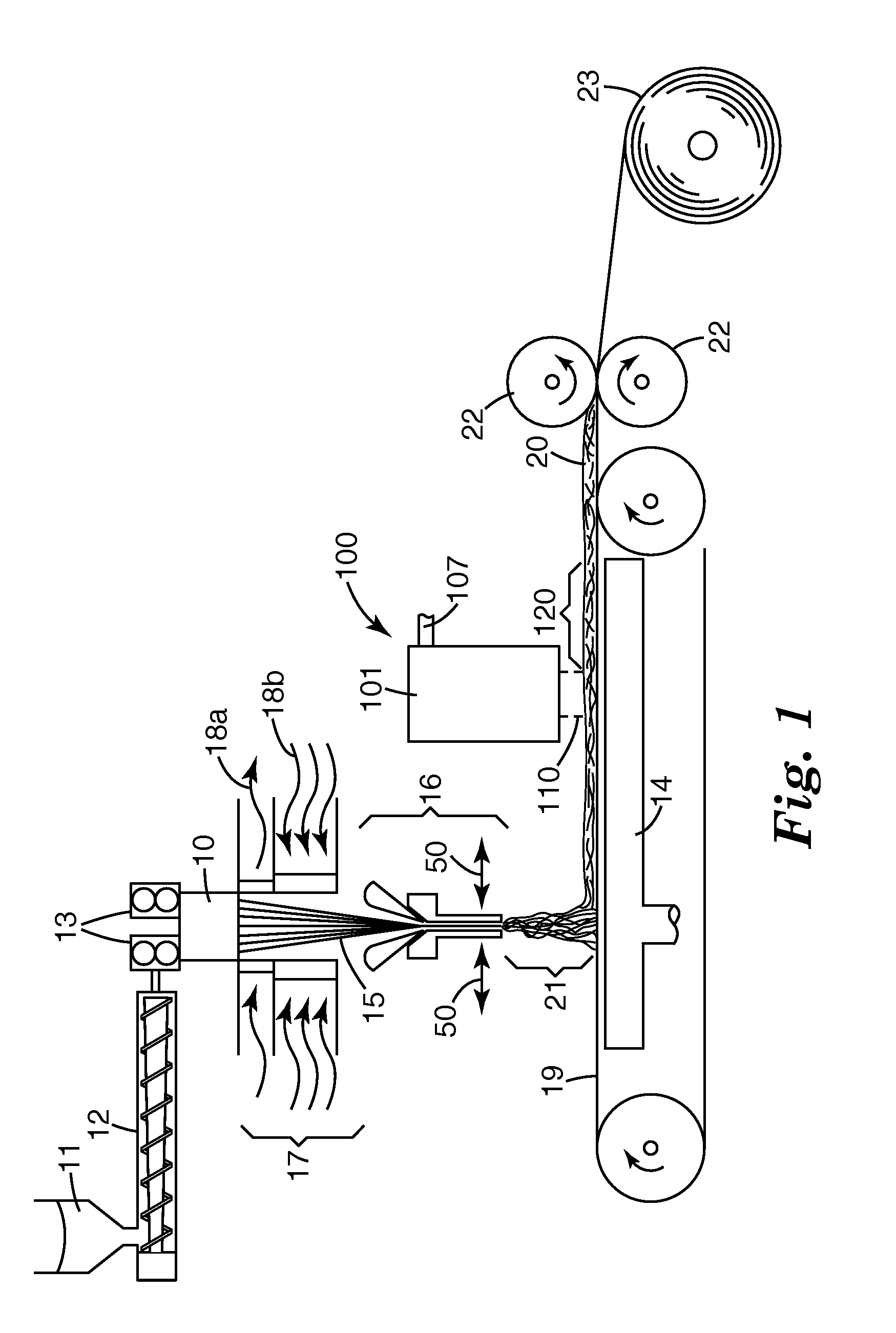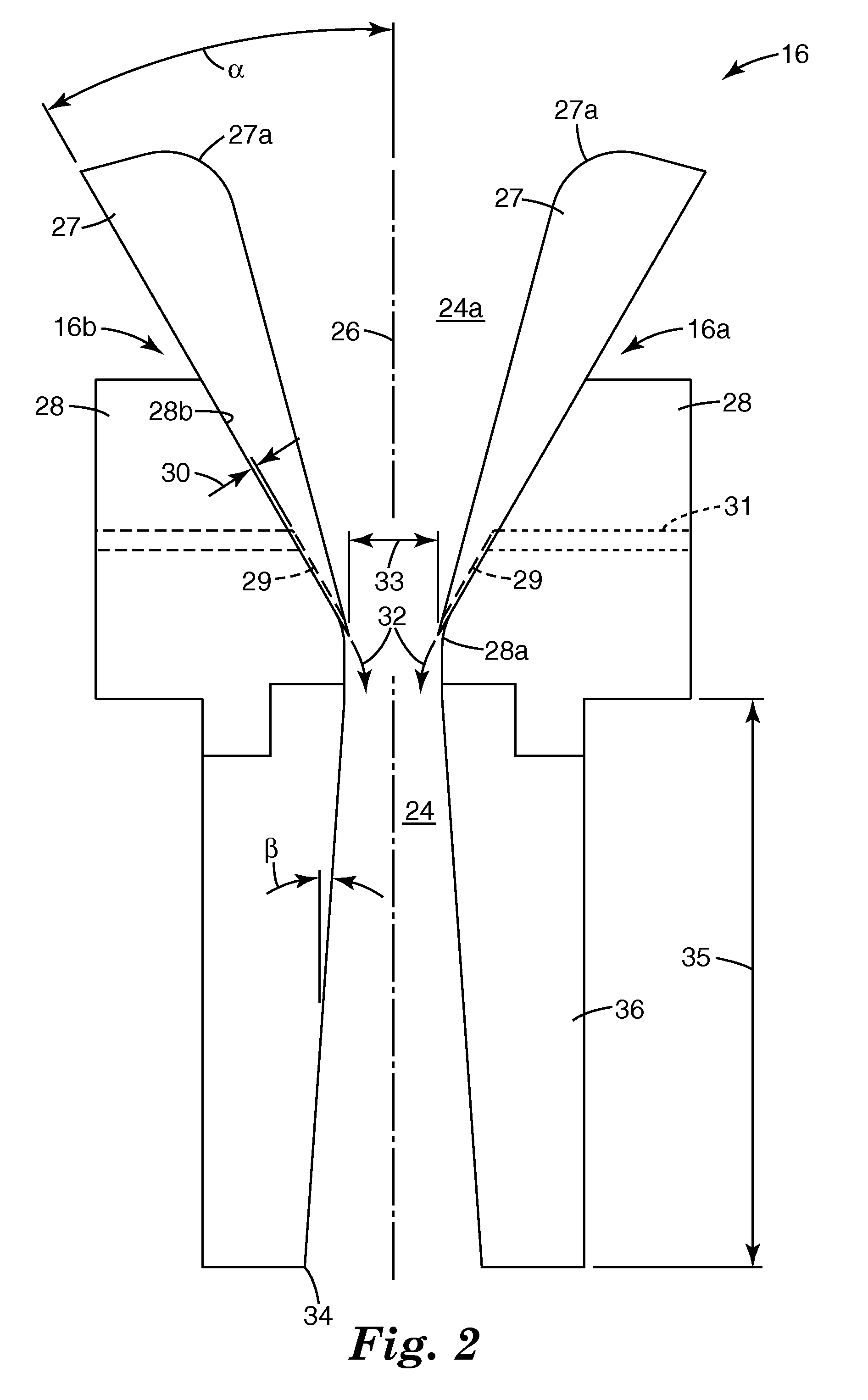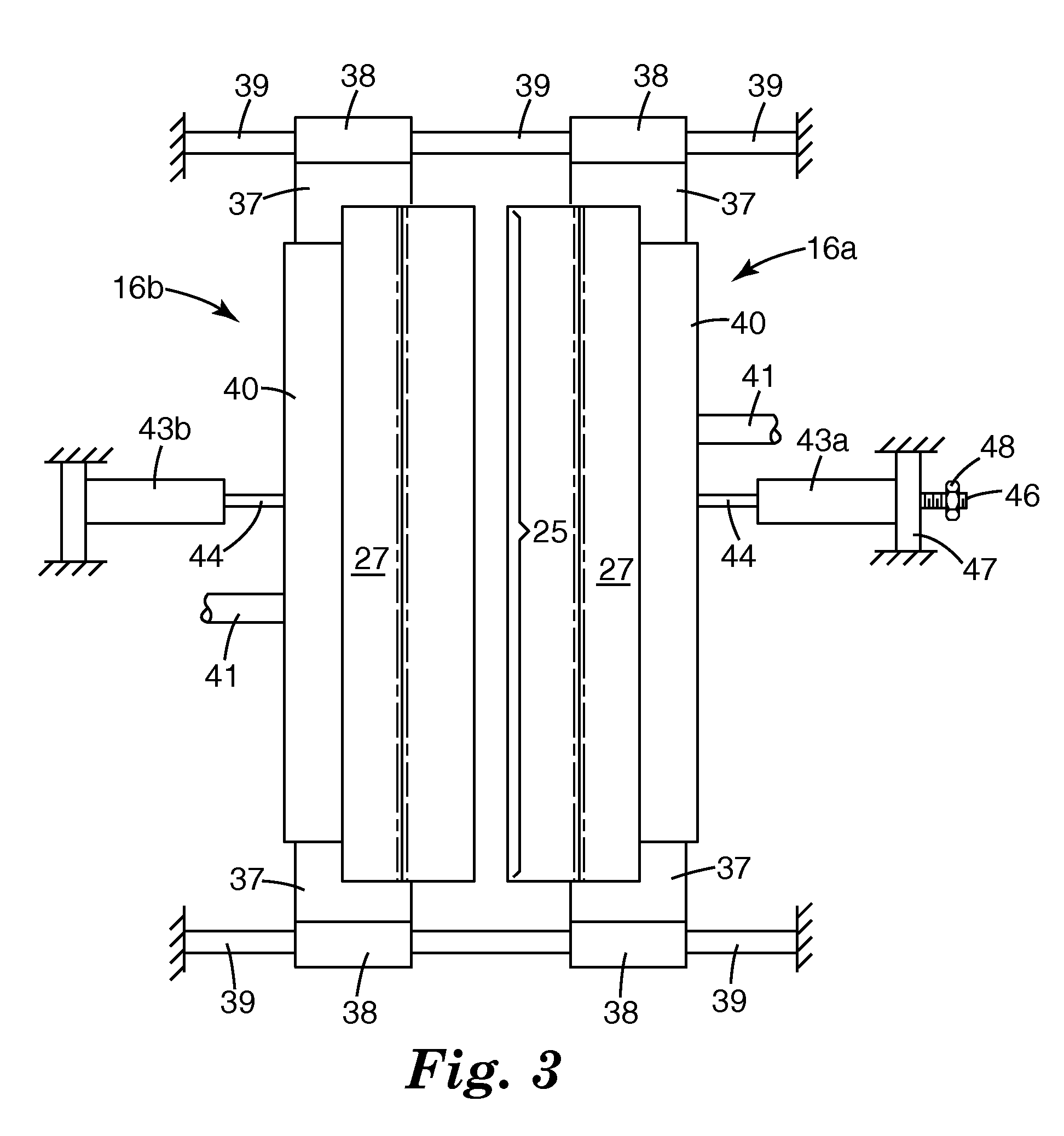Bonded nonwoven fibrous webs comprising softenable oriented semicrystalline polymeric fibers and apparatus and methods for preparing such webs
- Summary
- Abstract
- Description
- Claims
- Application Information
AI Technical Summary
Benefits of technology
Problems solved by technology
Method used
Image
Examples
examples 1-6
[0077]Apparatus as shown in FIGS. 1-5 was used to prepare fibrous webs from polypropylene and polyethylene terephthalate. Examples 1-3 and C1-C6 were prepared from polypropylene (PP) having a Nominal Melting Point of 160.5° C. and a melt flow index (MFI) of 70 (Dypro 3860× polypropylene resin supplied by Total Chemical of Houston, Tex.). Examples 4-6 and C7-C8 were prepared from polyethylene terephthalate (PET) having a Nominal Melting Point of 254.1° C. and an intrinsic viscosity of 0.61 (3M Polyester Resin 65100).
[0078]Certain parts of the apparatus and operating conditions are summarized in Table 1. The clamping pressure reported in the table was sufficient that the walls of the attenuator remained generally fixed during preparation of fibers. Apparatus parameters not reported in the table are as follows. The plate 104 in FIG. 5 contained ¼-inch-diameter (0.64 centimeter) holes at a uniform spacing of ⅜ inch (0.95 centimeter) such as to constitute 40% of the plate area. The colle...
examples 7-8
[0086]The webs of Examples 7 and 8 and C9-C11 were prepared by carding oriented crimped nylon 6-6 staple fibers on a Holingsworth random card; the fibers, supplied by Rhodia Technical Fibers, Gerliswilstrasse 19 CH-6021 Emmenbrucke, Germany, were characterized as 2-inch (about 5 centimeter) cut staple 6-denier (16.7 decitex) fiber having a crimp count of three per inch (1.2 per centimeter). Unbonded webs of 100 gsm basis weight were prepared and passed on a conveyor through a quenched flow heater as pictured in FIGS. 4 and 5 and generally as described in Examples 1-6 with further conditions as described in Table 3 below and as follows: heated air was delivered at 1050 meters per minute; the web was quenched by 25° C. ambient air drawn through the web at a rate of about 400 meters per minute over a length along the conveyor of 15 centimeters.
[0087]The treated webs were studied in the described Melting Distortion test, and samples of the webs were also subjected to MDSCT testing the s...
examples 11-14
[0088]A commercial polypropylene spunbond web (BBA Spunbond Typar style 3141N, available from BBA Fiberweb Americas Industrial Division, Old Hickory, Tenn.) having a nominal basis weight of 50 gsm and comprising oriented polypropylene fibers having an average diameter of 40 micrometers was treated by passing it through a quenched flow heater apparatus as illustrated by the apparatus 100 in FIGS. 1, 4 and 5. The web was passed through the apparatus at a rate of 4.6 meters per minute. Air heated to a temperature as given in Table 4 was passed through the slot 109, which was 3.8 centimeters wide and 56 centimeters long, at a rate of 420 meters per minute. The gas-withdrawal device 14 applied a negative pressure of 215 mm H2O below the web. The plates 104 and 111 were as described for Examples 1-6. Ambient air (at a temperature of about 25 degrees C.) was drawn through the web at a rate of 360 meters per minute through a distance 120 of 15 centimeters.
[0089]The treated webs were studied...
PUM
| Property | Measurement | Unit |
|---|---|---|
| Temperature | aaaaa | aaaaa |
| Thickness | aaaaa | aaaaa |
| Angle | aaaaa | aaaaa |
Abstract
Description
Claims
Application Information
 Login to View More
Login to View More - R&D
- Intellectual Property
- Life Sciences
- Materials
- Tech Scout
- Unparalleled Data Quality
- Higher Quality Content
- 60% Fewer Hallucinations
Browse by: Latest US Patents, China's latest patents, Technical Efficacy Thesaurus, Application Domain, Technology Topic, Popular Technical Reports.
© 2025 PatSnap. All rights reserved.Legal|Privacy policy|Modern Slavery Act Transparency Statement|Sitemap|About US| Contact US: help@patsnap.com



